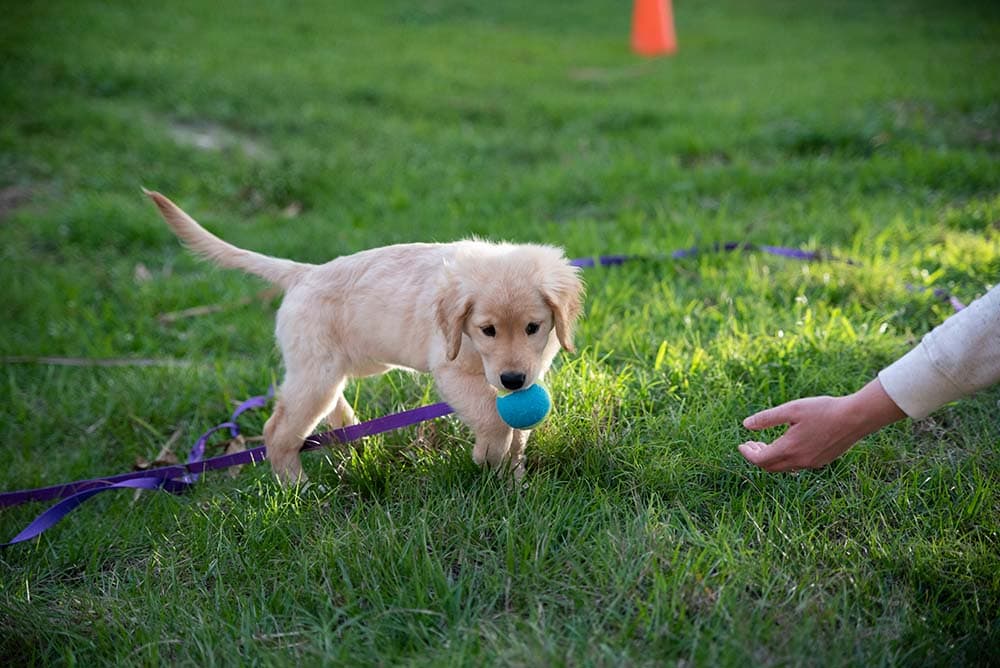How Big Do Westies Get? Average Weight & Growth Chart

Updated on

Click to Skip Ahead
Westies, or West Highland White Terriers, are popular small dogs that make great pets if you don’t have a lot of space or don’t want to deal with a larger breed. They top out at about 22 pounds. According to the American Kennel Club, westies weigh 15-20 pounds. Males are usually heavier than females. Westies reach their full size and weigh around one year of age. Ideally, males are 11 inches while females are 10 inches tall at the shoulder.
Westies Breed Overview
If you’re interested in getting a Westie, you’re not alone! These small white dogs are a relatively popular breed because of their size and temperament. Westies are small enough to cope well with apartment living and are less physically demanding than larger breeds, but they are still hardy and energetic. This makes them a perfect choice if you want a dog to run and play with you all day.
Westies also have a distinctive, beautiful appearance. They were bred to have a bright white coat so they’d be hard to lose sight of—a trait we still appreciate three centuries later! Westies have a compact body and perky, pointed ears. Their undercoat is soft while their outer coat is straight and relatively hard hence need regular grooming and occasional trimming to stay clean and clear.
Westies Size and Growth Chart

West Highland White Terriers reach their full size around 12 months of age. These pups are usually born in litters of three to five tiny puppies, each weighing less than half a pound. Over their first few weeks, they’ll grow rapidly, but by the time they’re adopted out, their weight gain has slowed. Your puppy should reach their full length and height at the shoulder before they reach their full weight. Because males and females are different sizes, we’ve included charts for male and female Westies below which have slight deviations from the ideal weight and height breed standard as per AKC.
Female Westie Growth Chart
| Age | Weight Range | Height Range |
| Birth | 4 – 8 oz | — |
| 3 Months | 6 – 7 lbs | 5.5 – 7 in |
| 4 Months | 7 – 8 lbs | 6 – 8.5 in |
| 5 Months | 8 – 10 lbs | 7 – 9.5 in |
| 6 Months | 9 – 11 lbs | 8 – 10.5 in |
| 7 Months | 10.5 – 12 lbs | 8.5 – 11 in |
| 8 Months | 11 – 13 lbs | 9 – 11.5 in |
| 9 Months | 12 – 15 lbs | 10 – 11.5 in |
| 10 Months | 13 – 15.5 lbs | 10 – 11.5 in |
| 11 Months | 13 – 16 lbs | 10 – 11.5 in |
| 12 Months | 13 – 16 lbs | 10 – 11.5 in |
Male Westie Growth Chart
| Age | Weight Range | Height Range |
| Birth | 4 – 8 oz | — |
| 3 Months | 7 – 9.5 lbs | 6 – 7.5 inVA_Does Boric Acid Kill Fleas on Cats? |
| 4 Months | 9 – 12.5 lbs | 7 – 9 in |
| 5 Months | 11 – 15 lbs | 8 – 10.5 in |
| 6 Months | 12 – 16.5 lbs | 9 – 11.5 in |
| 7 Months | 14.5 – 19 lbs | 9.5 – 12 in |
| 8 Months | 13 – 20 lbs | 10 – 12.5 in |
| 9 Months | 13.5 – 21 lbs | 11 – 12.5 in |
| 10 Months | 14 – 21.5 lbs | 11 – 12.5 in |
| 11 Months | 15 – 22 lbs | 11 – 12.5 in |
| 12 Months | 15.5 – 22 lbs | 11 – 12.5 in |
When Does a Westie Stop Growing?
Westies reach their full height around 9–10 months of age, but they continue to fill out for a few months after that. You should expect your Westie to be at its full height and weight at around 12-15 months old, although some stop growing a little sooner or later than that.
Factors Affecting the Size of Westies

The two biggest factors affecting the size of Westies are genetics and nutrition.
Westies’ growth potential is governed by their genes and gender. Male Westies grow larger than females. At the same time, there’s a lot of variation within genders. If both your Westie pup’s parents are on the larger side, you should expect a larger adult size, while smaller parents are likely to produce a smaller Westie.
Another important factor in your puppy’s size is nutrition. Giving your puppy plenty of high-quality food formulated for puppies (sometimes sold as “growth formula”) will help your puppy grow to its full potential for size and strength. Dogs who miss out on essential vitamins or who don’t eat enough while growing are at risk of malnutrition that can stunt growth, leaving them smaller and less healthy. There are also other environmental factors, like illness, that can stunt growth.
In most cases, doctors recommend feeding your puppy as much as it wants without worrying about obesity or overeating. However, as your puppy’s growth slows and it reaches maturity, you will have to start watching your Westie’s food intake. Most Westies have a tendency to overeat if given free rein. Because of that it’s important to feed your dog pre-portioned, high-quality meals and avoid overfeeding.
Ideal Diet for Maintaining a Healthy Weight
West Highland White Terriers are active, energetic dogs, so even though they don’t need much food, they do need high-quality food. Look for foods that are high in protein, with meat as the first ingredient, and include healthy whole grains. Westies need about half a cup to one-and-a-half cups. of food per day, split up into two or three meals. Smaller and older Westies will need less food, while young, large, and active Westies will need a little more. If you feed your dog treats or supplemental foods regularly, make sure to calculate it into your Westie’s diet. Because some Westies have allergies and are prone to liver problems, they might need a special diet. Discuss this with your veterinarian.

How to Measure Your Westies
Westies are small dogs, and that can make it challenging to measure them. When your Westie is under about 10 pounds, a kitchen scale is the most accurate way to measure their weight. However, if your puppy is too big or too active to measure with a kitchen scale, or if you don’t have one at home, you can use a bathroom scale as well. One technique for weighing wiggly dogs is to weigh yourself holding your puppy and then subtract your own weight.
Dog height is measured to the top of the shoulders and doesn’t count any extra height from the head, ears, or tail. Place a measuring stick or tape flat against a wall and position your dog so that it is standing straight with its front paws level with the measuring stick. Make sure your dog is standing up straight with its head level, not hunching over or stretching. The highest point of your dog’s shoulders, called the withers, should be above its front paws. You can usually feel a ridge of bone right where the withers are. Alternatively, you can use a pencil to mark the wall level to your dog’s shoulders and measure from that point to the ground.
Conclusion
West Highland White Terriers are small dogs, but they grow pretty fast! Puppies reach their full weight and height by about 12 months old, and even though there’s a pretty big range of healthy weights, you can get a good idea of how big your dog will be by comparing its current age and weight to its potential. If you want a small but active dog, a Westie might be the perfect choice for you!
Featured Image Credit: A. Kiro, Shutterstock












